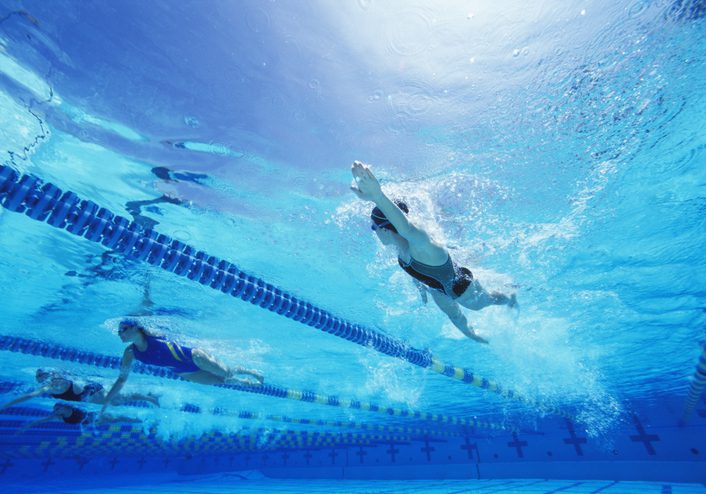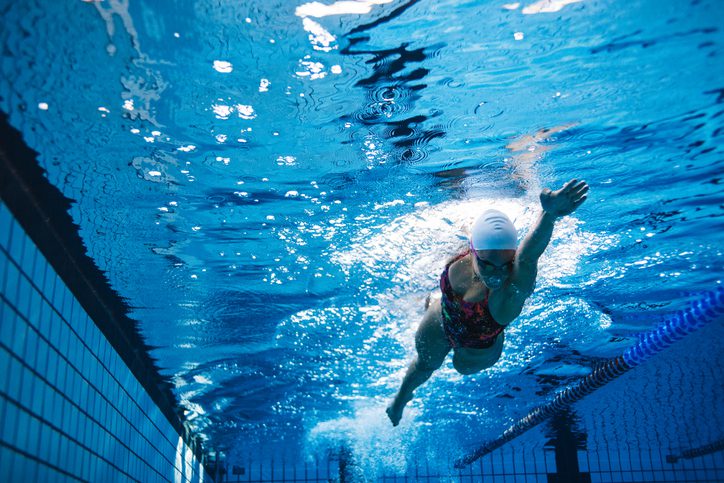Back to the pool – fall focused swim workouts
Make the most out of whatever swim training you can get this fall
 Photo by:
Getty Images
Photo by:
Getty Images
Lots of triathletes have resigned themselves to the “fact” that swim training is simply going to have to wait. As we enter the fall, lakes are getting cold and, thanks to the pandemic, most pools still have limited access. Most of us can’t afford an endless pool and, unless you’ve got access to a moderate-sized heated pool, even tethered swimming isn’t an option.
I spoke recently with a fellow triathlon coach who was convinced that his athletes would simply ride this thing out without bothering to swim at all.
“It is what it is. When the pools can handle a group and my guys can do a structured session, we’ll get back in. In the mean time, we’re a duathlon club.”
I guess that’s one way to approach it, but unless your last name is Phelps, it’s not a path I’d suggest for most of the triathletes I’ve worked with. Gaining back lost ground is frustrating and hard to do. Holding ground is much easier.
So what are we suppose to do during this especially challenging time?
Everything we can.

Use every minute
First and foremost, however limited the pool access might be, you need to take whatever you can get. It seems, across the country, that 45-minute bookings are the standard, but my athletes are reporting they’re able to book two to three sessions a week. In some cases, that means setting an alarm and getting up before the cows need milking, but you’re athletes – this shouldn’t be a challenge.
Once you have those lanes booked make sure you’re organized and ready to go. Use every minute.
No one really knows when racing, at least the kind of racing we’re used to, is going to return, so motivation can be a challenge, especially for those of you who are still view the swim portion of a race as something that must just be survived. But why not use this time to work on your stroke, body position and kick? If you’re a weak swimmer there’s an excellent chance you’re deficient in all three of those areas.
Instead of doing a 500-m warm up and a 2,400 m, full gas main set, consider doing 1,100 m of drills and warm-up, followed by a 1,000 m main set. Or, better yet, stop counting meters, slow it down and get it right.
You don’t often see me use the word “drills” because, in my experience, traditional drills offer limited returns. Depending on how you define the word and execute the drills, though, doing them can really bring your swim game up. A drill needs to isolate the variables of the swim stroke so that you can better focus on the individual elements, particularly those that need attention. That could be a dropped elbow, stiff wrist or weak finish. But the key is that you then need to be able to generalize that work to your full stroke. You can do thousands of meters a week of single arm drills, but if you’re just repeating the same mistakes you make when swimming with both arms, you’re not going to improve your stroke.
But, thanks to the pandemic, you’re likely to be swimming in your own lane, with no pressure to win the warm-up. Now try that single arm drill, but, this time, really connect with what you’re doing. Watch for that high elbow and strong finish. Slow down and get it right. Without the pressure to be race fit by the weekend, focus on creating new neural patterns.
And use the time to work on your kick as well. Most triathletes have a weak kick. Again, stop counting meters and just spend some time working that skill. Use fins and also spend time kicking without fins, kick with a board and without one. A stronger kick means a better body position, legs that aren’t as smashed after a hard swim (like in a race), and you’ll swim faster.
So you have 45 minutes to get in a session. A good one might look like this (some adjustments might need to be made for different levels, or if you’re in a 50 m pool):
- 5 min of easy swimming
- 5 min of 25 m pull/25 m kick
- 4 min kick with fins as 25 flutter/25 dolphin
- 4 min of band only (no pull buoy) – resting 10 secs every 50 m
- 4 min as 25 right arm/ 25 left arm/ 25 both with fins
50 pull easy
2 X
- 200 pull moderate @ 20 seconds rest interval (SRI
- 2 x 100 strong @ 15SRI
- 50 easy @ 10 SRI
- 50 fast @ 20 SRI
100 easy cool down
If you find you’re only able to to get to the pool twice a week, make sure you’re augmenting those swims with generous amounts of cord work. Keep your core routines regular and, above all, take comfort in the knowledge that the vast majority of folks are in the same boat. If you aggressively pursue that pool time and make the best of the time you have, you’ll gain a leg up over all those athletes who aren’t.
Clint Lien is the head coach of Victoria’s Mercury Rising Triathlon www.mercuryrisingtriathlon.com
This story originally appeared in the September issue of Triathlon Magazine Canada.
